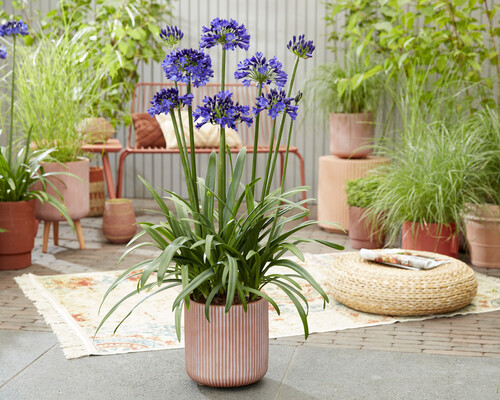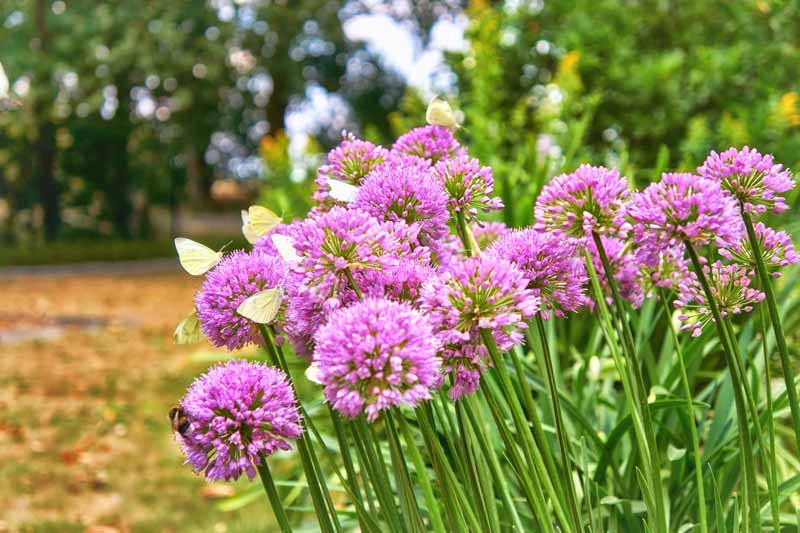Releasing the Secret to Effective Agapanthus Farming: Advice for a Flourishing Garden
In the world of gardening, cultivating agapanthus efficiently needs a strategic approach that incorporates various elements of plant treatment. By understanding the subtleties of agapanthus growing, one can produce an environment where these plants grow and flower abundantly.
Growing Agapanthus: Best Practices
When growing Agapanthus, proper soil prep work is necessary for guaranteeing effective development and development of these lovely flowers. Agapanthus, typically recognized as Lily of the Nile or African lily, grows in well-draining soil with a somewhat acidic to neutral pH level - Agapanthus. Prior to planting, it is critical to amend hefty clay soils with organic issue such as garden compost or peat moss to boost water drainage and provide necessary nutrients for the plants
To plant Agapanthus, select a location that obtains full sunlight to partial color, as this will certainly advertise healthy development and abundant flowering. Dig a hole two times the size of the plant's origin sphere and position the Agapanthus at the same depth it was formerly expanding. Gently backfill the opening with dirt, pushing down securely to eliminate any type of air pockets around the roots.
Water the recently planted Agapanthus thoroughly and remain to maintain the dirt uniformly moist, especially during the plant's energetic expanding period. Agapanthus. Applying a well balanced fertilizer once a month can additionally sustain the plant's growth and flowering. By complying with these ideal methods for growing Agapanthus, you can produce a sensational display of these fascinating blossoms in your garden
Perfect Dirt Conditions for Agapanthus
For optimal growth and blooming success of Agapanthus plants, guaranteeing the soil problems are perfect is vital. Agapanthus thrives in well-draining soil with a slightly acidic to neutral pH level varying from 6.0 to 7.0. This sort of dirt permits adequate water drain, preventing waterlogging which can cause root rot. To boost soil drain, consider adding raw material such as garden compost or peat moss when preparing the growing site. Moreover, Agapanthus favors soil that is abundant in nutrients, so including a well balanced plant food throughout the growing period can promote healthy growth and vivid blossoms.

Watering and Feeding Tips
To guarantee healthy growth and dynamic flowers, correct watering and fertilizing methods are necessary for effective Agapanthus cultivation. Agapanthus plants take advantage of routine watering, specifically during the expanding season. It is suggested to water deeply once a week, guaranteeing the soil is wet but not waterlogged. Throughout hot weather condition or in pots, even more regular watering might be essential to stop the dirt from drying entirely.
When it involves fertilizing Agapanthus, a balanced fertilizer with equivalent components nitrogen, phosphorus, and potassium can be used in the springtime to promote healthy and balanced development and blooming. Slow-release plant foods are optimal for supplying nutrients slowly over a prolonged period. Stay clear of over-fertilizing, as this can lead to too much vegetation growth at the expenditure of flowers.
In addition, incorporating natural matter like compost right into the soil can enhance nutrient degrees and enhance soil framework, helping in the general health of the Agapanthus plants. By following these watering and feeding suggestions, gardeners can guarantee their Agapanthus plants flourish and produce spectacular displays of flowers.
Trimming and Deadheading Methods
Proper trimming and deadheading strategies play a critical function in have a peek at this site preserving the health and appearances of Agapanthus plants, matching the essential methods of watering and fertilizing for effective farming. Trimming Agapanthus includes getting Read More Here rid of spent blossom heads, dead or yellowing fallen leaves, and general shaping of the plant to promote much better development. Deadheading, the procedure of eliminating discolored flowers, not only enhances the plant's appearance but likewise motivates more blooming.
When deadheading Agapanthus, it is a good idea to clip off the flower stem at the base utilizing sharp, tidy shears. This procedure redirects the plant's energy from seed manufacturing back into root and foliage development, advertising a healthier and a lot more durable plant. Regular deadheading can prolong the flowering duration of Agapanthus and prevent self-seeding, which can cause congestion.
In regards to trimming, Agapanthus typically advantages from a light trim after blossoming to clean up the plant and encourage fresh development. Reducing back the invested blossom stems and removing any damaged or dead foliage helps maintain the plant's vigor and general look. Nevertheless, it is crucial to avoid reducing right into the crown of the plant, as this can damage its wellness.

Protecting Agapanthus From Pests and Diseases
Carrying out efficient insect and disease monitoring approaches is critical to protecting the health and wellness and vitality of Agapanthus plants in cultivation. Agapanthus are usually sturdy plants, but they can still succumb numerous pests and conditions otherwise appropriately taken care of. One common parasite that influences Agapanthus is the Agapanthus borer, a caterpillar that passages right into the plant, causing damages to the leaves and flowers. To avoid problems, routine evaluation of the plants is important. If borers are detected, they can be by hand removed, or insecticidal soap can be made use of as a control step.
In enhancement to pests, Agapanthus are vulnerable to diseases such as root rot and fungal fallen leave places. By remaining attentive and attending to insect and illness concerns without delay, gardeners can help their Agapanthus flourish and thrive.

Verdict
Finally, effective cultivation of agapanthus calls for correct planting methods, excellent dirt conditions, appropriate watering and feeding, normal trimming and deadheading, and protection from conditions and parasites. By complying with these techniques and tips, garden enthusiasts can make sure a flourishing yard loaded with stunning agapanthus blossoms. Agapanthus. Remember to maintain constant treatment and focus to information to advertise the health and long life of browse around this web-site these sensational plants
When growing Agapanthus, proper soil preparation is necessary for making certain successful growth and growth of these beautiful blossoms.Water the recently grown Agapanthus thoroughly and continue to keep the dirt evenly wet, specifically during the plant's energetic expanding period.For optimum growth and flowering success of Agapanthus plants, making certain the soil problems are ideal is critical. When transplanting or growing Agapanthus, ensure the dirt is well-prepared to provide the essential foundation for the plants to develop themselves effectively. One usual parasite that influences Agapanthus is the Agapanthus borer, a caterpillar that passages right into the plant, creating damage to the flowers and leaves.
Comments on “Agapanthus Breeding: Tips for Expanding Your Plant Collection”